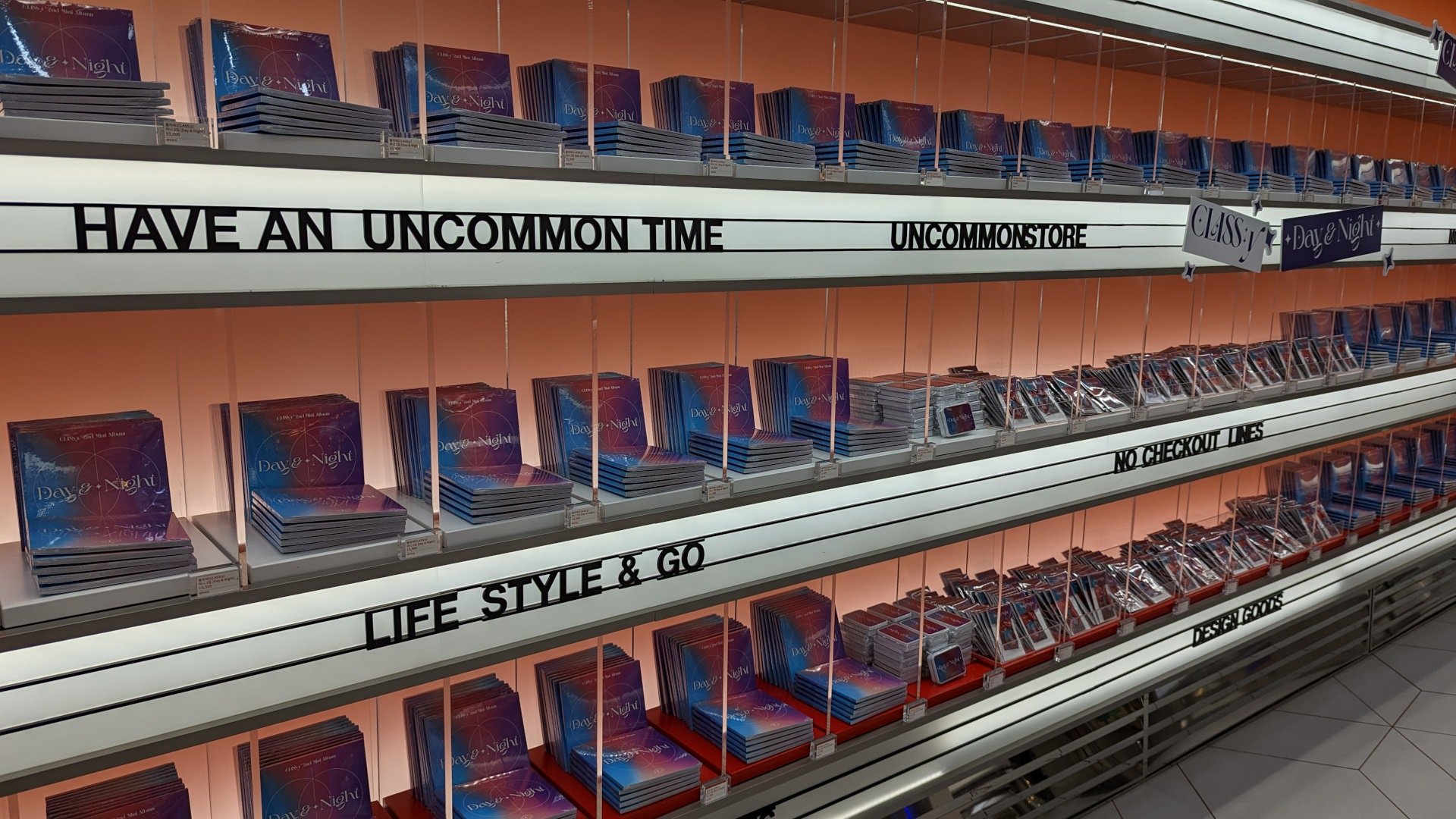Seoul | On the top floor of the Hyundai Seoul department store, the Uncommon Store is hidden in a comparably measly 33 square meters, probably the most beautiful store ever realized using Amazon Just Walk-Out technology. The stylish shop provides a rare insight into the effort that Amazon puts into it and explains why the concept is limited to small areas.
The Hyundai Seoul, the largest department store opened in 2021 in the Yeouido financial district of the South Korean capital, looks like a spaceship. The British architectural team built an 89,100 square meter building complex between countless bank towers. Shoppers can find more than 600 brands on 15 floors, mainly in shop-in-shop concept stores, the largest food court in Asia and more than 11,000 m² covered gardens.
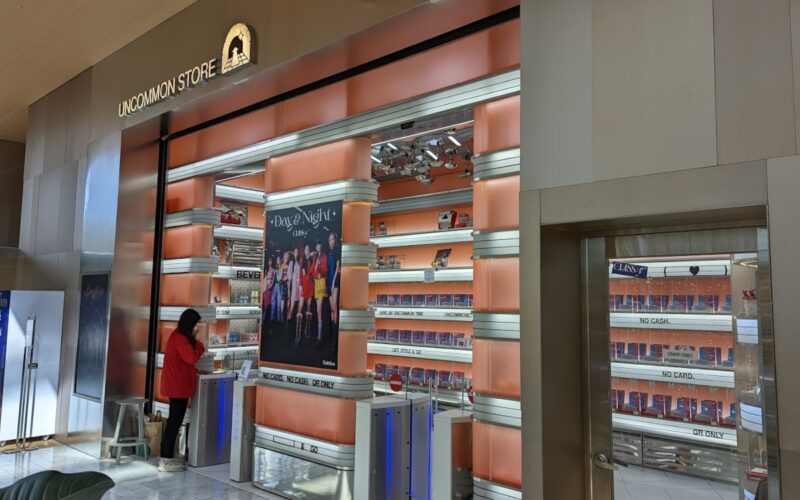
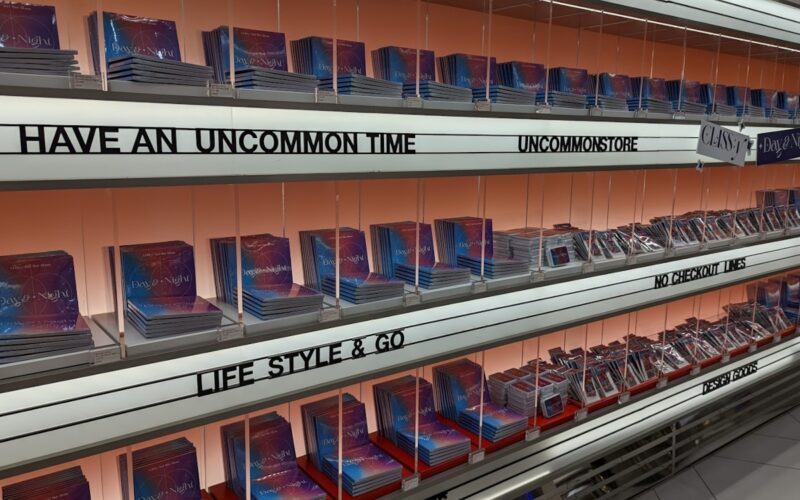
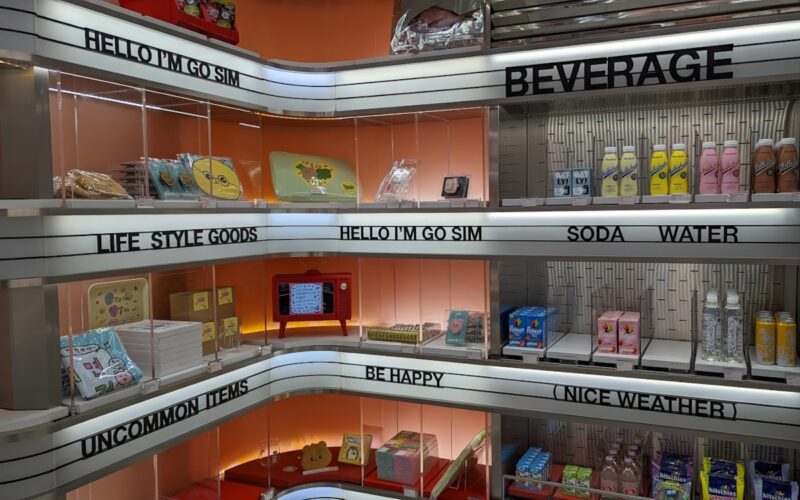
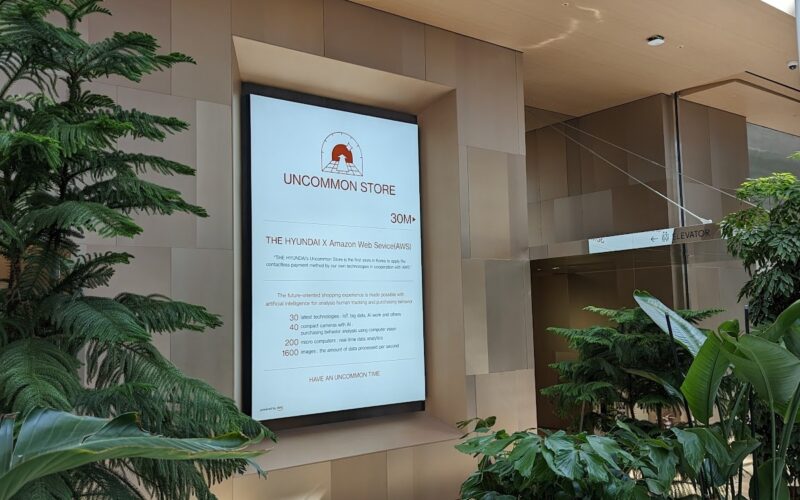
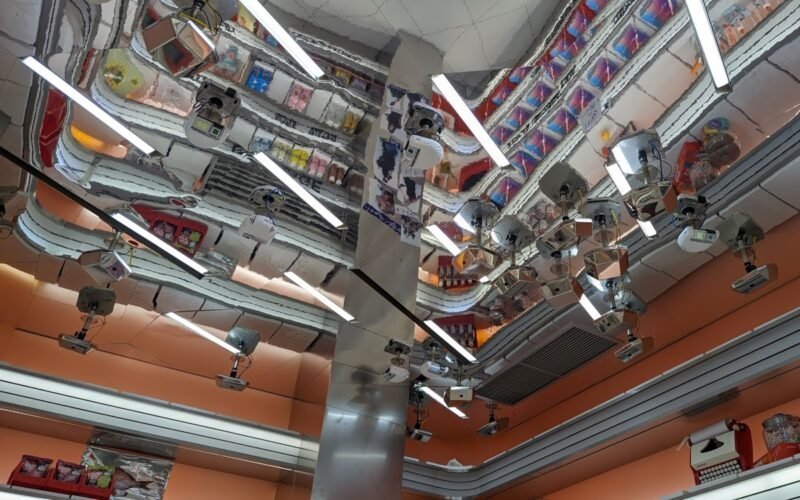
Inside, the department store impresses with a white, organic interior design. On the ground floor, cleaning and information robots equipped with digital signage stoically carry out their respective tasks. A cleaning robot advertises an art exhibition on the top floor on the 360-degree LED, while an LG Cliq information robot informs visitors via touchscreen.
On the top floor we discovered the Uncommon Store – a check-out-free store that was jointly realized with Amazon and The Hyundai’s own IT service provider. With its peach and silver color scheme, the 33 square meter uncommon store looks more like a cosmetics store in a department store or at an airport than a convenience store. The Korean retail architects wanted to create an unusual convenience store that evokes a retro feel to appeal to a young South Korean clientele.
The Amazon Go concept – the 3rd party platform of Amazon Just Walk Go – has proven itself dozens of times in convenience stores since its launch in 2018, but Amazon itself cancelled further rollouts of large-scale stores. The technical effort is too great.
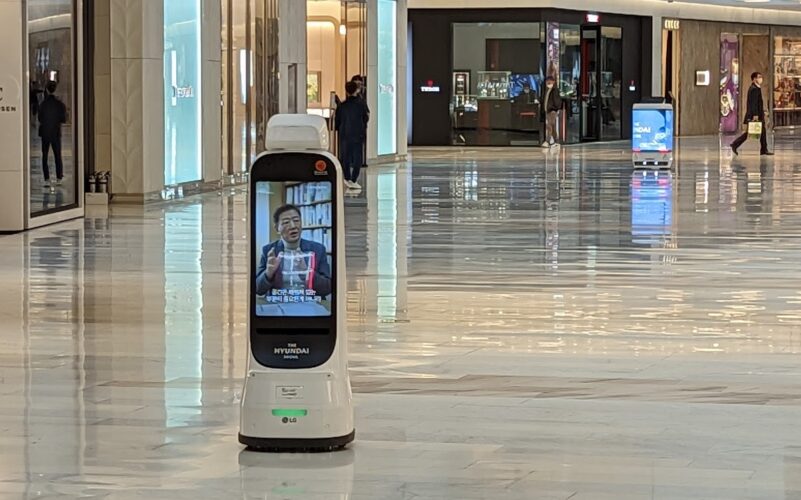
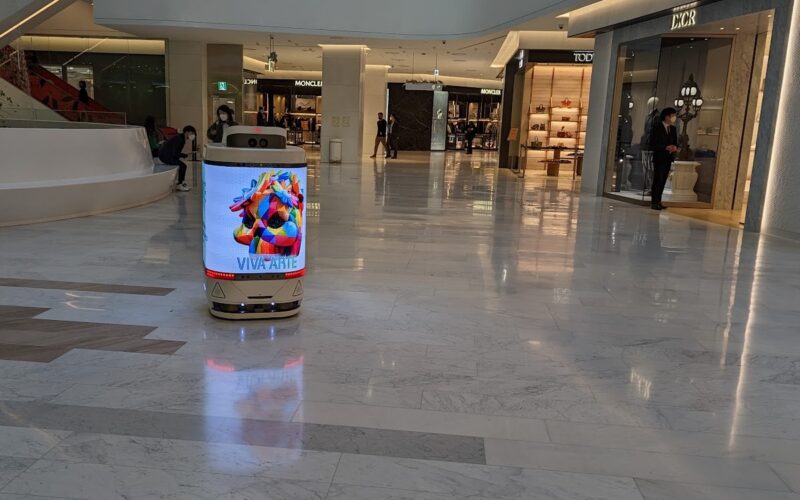
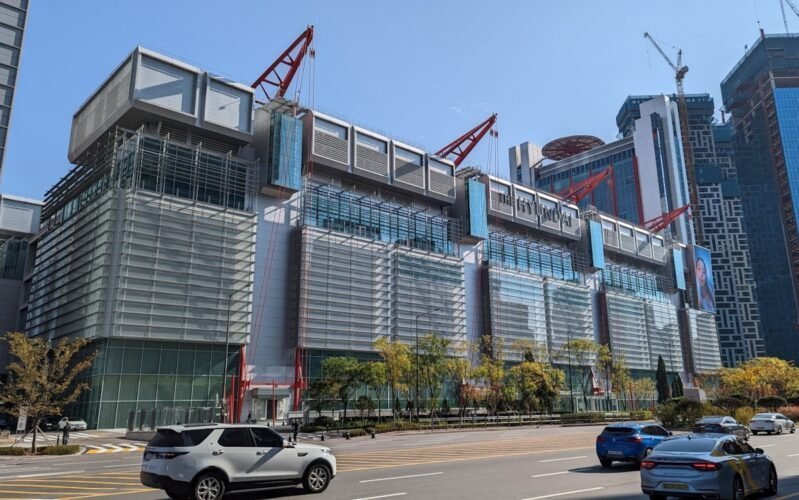
A look at the mirrored ceiling gives an idea of the effort involved in Amazon Go. Amazon normally hides the countless sensors in a black ceiling structure, but here everything is clearly visible underneath the mirrored ceiling in the Uncommon Store.
40 sensors were installed for the 33 square meter store alone. 30 different technologies from AI, IOT and analytics are necessary to enable an error-free “just walk out”. In real time, 200 analytics processors calculate the 1,600 images captured every second.
With technology overkill, Amazon has proven that autonomous convenience stores are possible. Also European retailers like Rewe, Edeka, Aldi, Migros & Co. have discovered the potential and are developing their own mini-stores with similar technology. But the technology cannot (yet) be used for larger stores as the technical effort and energy consumption are disproportionate to the yield.

